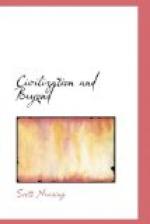A revolt was led by Fidel Castro and his associates against the Washington-backed Batista regime in Havana, Cuba. When Cuba was seized by United States armed forces during the Spanish-American War of 1898 much of the island was in the hands of anti-Spanish rebels who were demanding independence of Spain’s imperialist rule. Between 1898 and 1959 seven million Cubans enjoyed technical independence. Actually the island, located only 90 miles from Florida, was economically a United States colony and politically a Washington dependency, with United States armed forces stationed in the Guantanamo Bay Naval Base. After seizing power in 1959, Castro went to the United States seeking a market for Cuba’s chief export, sugar; a source of food supplies not produced in Cuba, and the manufactures necessary for the economic and social life of an essentially agricultural island.
Batista had emptied the Cuban treasury before he fled the island in 1959. Castro therefore needed loans to meet the immediate needs of the Cuban economy. He also sought to continue arrangements under which the chief market of Cuban sugar was in the United States. Castro was turned down cold. All doors, political and economic, were closed to him. As a revolutionary with left leanings he got the cold shoulder in New York as well as in Washington.
Faced by economic bankruptcy and political hostility in the West, Castro turned to the Soviet Union and other socialist countries. They bought his sugar on long term contracts; provided him with manufactures; extended loans. Under these economic and political conditions Castro’s Cuba had no choice. Of necessity it became a part of the socialist bloc, took over the property of Americans and other foreign investors, planned its economy and announced socialist goals, thus making the island of Cuba the only outpost of socialist construction in the Americas.
Socialists exercised authority in one country from 1917 until 1943. Thereafter the land area devoted to building socialism steadily increased. By the time China threw off imperialist leading strings and opted for socialist construction in 1949, a third of mankind was living on territory under nominally socialist control. Most of this territory was Asian. An important part lay in eastern Europe. Until 1917, effective control of the planet was held by a half-dozen empires headed by the British, who exercised authority over a quarter of the human race living on a quarter of the earth’s land area. After 1917 socialism mushroomed as a potential competing social system, challenging monopoly capitalism in Europe, replacing it in large sections of Asia and even threatening to destroy the foundations of western civilization.
“Action and reaction are equal and opposite” is an axiom of physical science which is also applicable in the social field. The sweep of world revolution and the growth of socialism-communism after 1945 called into being an opposing force of counter-revolution. The greater the successes of socialism, the more ardent and assiduous was the counter drive, aimed to modify, negate and, if possible, to destroy the revolution and restore the social system of imperialism-colonialism built by monopoly capitalism to its prerevolutionary status of planet-wide ascendancy.




